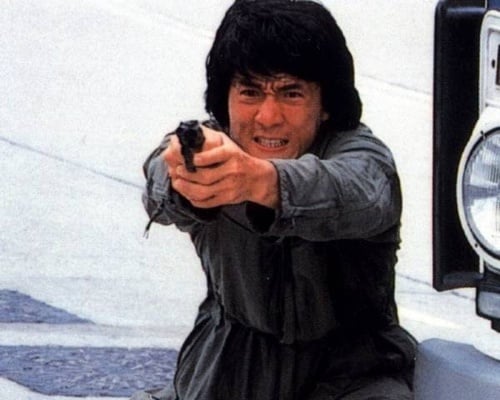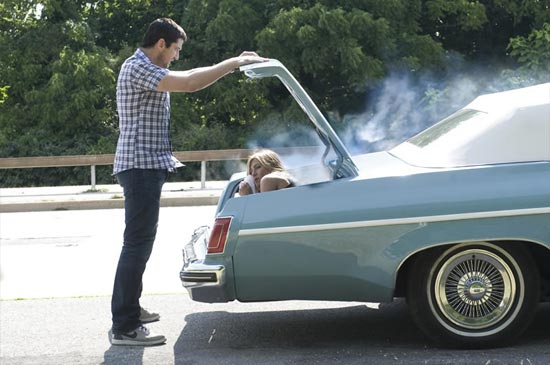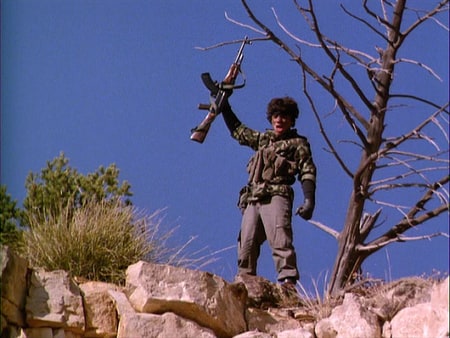Police Story II (a.k.a. Ging chaat goo si juk jaap) is the second part of an action film franchise. In keeping with the usual philosophy of action sequels, Police Story II is a far bigger film in terms of scope, ambition and execution, with more pyrotechnics and bigger fights. Additionally, in keeping with the usual law of this approach, the filmmakers behind Police Story II forgot that bigger is not always better. There's a lack of freshness hampering this follow-up, in addition to a demand for a bigger suspension of disbelief and far too much downtime in between the memorable moments. When the film is on, my word it is on, but when it's off? My word it's off.
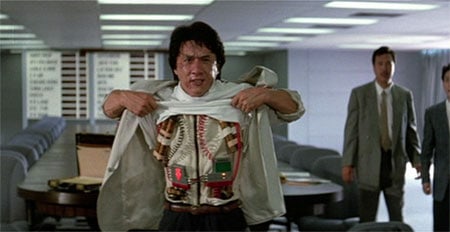
Wasting no time whatsoever, save for recapping the events of the previous movie, Police Story II kicks off immediately following the events of 1985's Police Story. Chan Ka Kui (Chan) has been relegated to uniformed traffic control duty because of his unorthodox approach to his police work. Despite his efforts putting drug lord Mr. Chu (Chor) behind bars, the criminal is now out of prison due to a three-month life expectancy, and has vowed to make Ka Kui's life a misery. Added to this, a group of criminals have started planting bombs in certain locations around the city, and are blackmailing large corporations for money. While Ka Kui wishes to go on vacation with his girlfriend May (Cheung), Ka Kui's superiors want him back on the force to track down the bombers. Before long, Ka Kui is back doing what he does best: kicking criminal ass.
As with the original film, the main reason to check out Police Story II is the action. In this regard, the film earns a recommendation. There are fight sequences inside a restaurant and in a playground, both of which are excellent examples of Chan's stunt style. Interestingly, Chan choreographed the fights on the set, as he would examine the surroundings to decide which props to use and how. Also in the film is a fight with a scrawny deaf-mute, which facilitated moments of Chan getting beaten. Unlike many egocentric action stars, Chan found it fun to let himself get one-upped from time to time. The proceedings eventually culminate with a massive battle in a fireworks factory; incorporating exhilarating fisticuffs, clever use of props, and a massive show of pyrotechnics that remains utterly spectacular all these years on. Chan is, of course, an exceptional director when it comes to this material - all the stunt work and fight moves were done without the aid of strings, and Chan wanted to ensure his cameras captured every moment of the astounding choreography. Speaking from a filmmaking standpoint, Police Story II is head and shoulders above its predecessor. The inventive camera set-ups, creative use of handheld cameras, and general staging of otherwise banal scenes affords the film a more polished look.
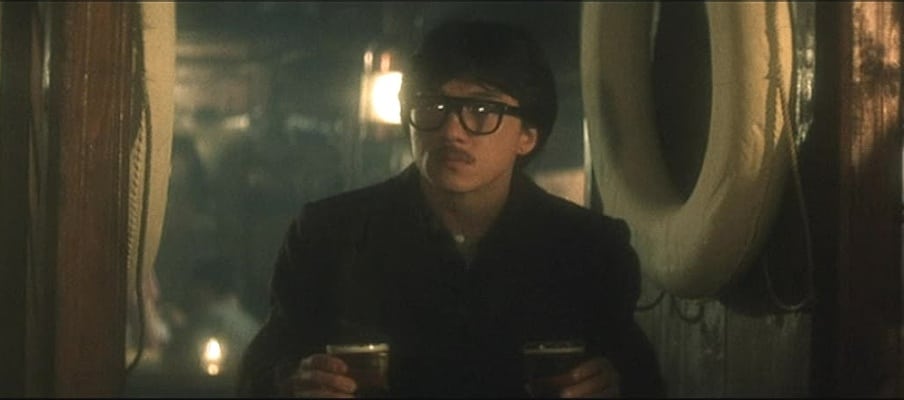
Chan's character, Ka Kui, is the consummate everyman; a likeable, and at times puckish do-gooder who may possess superhuman abilities but clearly has to pull out all the stops in order to survive. Fortunately, the comedic elements of Police Story II are less stupid than those within the original film, although there's an obnoxious running gag involving fart jokes. It's also much less fun than its predecessor due to the trite plot. Essentially, were it not for Jackie Chan, this would have been a second-rate Dirty Harry picture. While the action scenes here are of a high standard, there are long stretches without Chan in action. Adding insult to injury, the mid-section is unnecessarily dragged out and unforgivably sluggish. There is seldom any tension throughout this section; it's just observation and pursuing the bomb planters. The elements involving Ka Kui's love life are clumsily handled, as well.
Despite its multiple flaws, Police Story II manages to deliver in the action department at least. Jackie Chan is always engaging on-screen, as he performed top-notch stunts and intricate fight scenes while at the same time providing a bit of comedy to keep things light. There's nothing in the world quite like a showcase of Jackie Chan and his death-defying stuntmen doing what they do best, and this sequel contains all that good stuff. As with the original movie, an ouchtakes montage is played during the end credits, which is filled with behind-the-scenes footage of the stunts that went dangerously wrong.
6.0/10
 Login
Login
 Home
Home 183 Lists
183 Lists 1665 Reviews
1665 Reviews Collections
Collections
 0 comments,
0 comments, 
